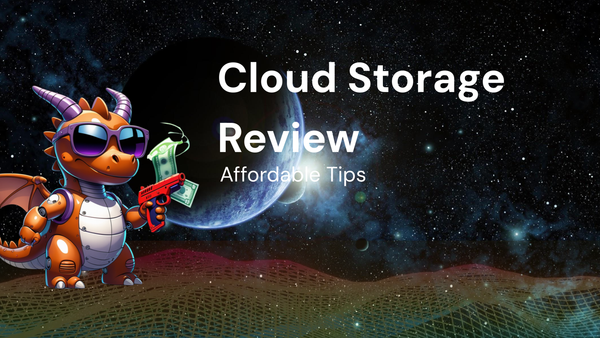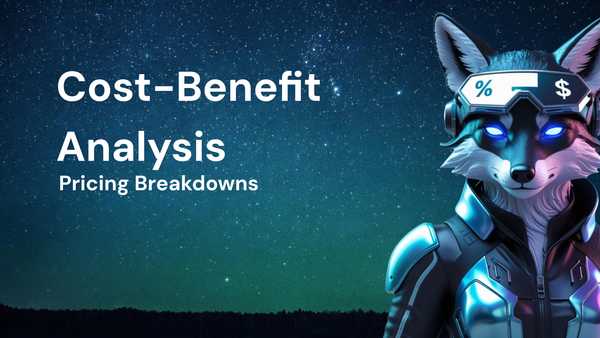Unlock Savings: Tips & Tricks on CRM software with discounts

Unlock Savings: Tips & Tricks on CRM Software with Discounts
Customer Relationship Management (CRM) software is a powerful tool for businesses of all sizes. It helps streamline operations, improve customer interactions, and ultimately drive revenue growth. However, the cost of implementing and maintaining a CRM can be a significant barrier for some organizations. This article provides valuable tips and tricks on how to unlock savings while investing in CRM software, ensuring you get the most value without breaking the bank.
Understanding Your CRM Needs: The Foundation for Cost-Effective Selection
Before diving into discounts and deals, the most crucial step is to thoroughly understand your business's specific CRM requirements. A clear understanding of your needs will prevent you from overspending on features you don't need and ensures you choose a system that truly addresses your challenges.
- Identify Key Business Processes: Begin by documenting your key business processes related to sales, marketing, and customer service. What are the pain points you're trying to solve? Where are the bottlenecks in your current workflow? For example, are you struggling with lead management, inefficient customer support ticketing, or lack of visibility into sales performance? Knowing these areas will help you prioritize features.
- Define Specific Requirements: Translate your business process pain points into specific CRM requirements. Instead of saying "we need better lead management," define exactly what that means. Do you need automated lead scoring? Integration with marketing automation tools? The ability to track lead source and engagement? Be as detailed as possible.
- Consider User Needs: Talk to your team members who will be using the CRM. What features would make their jobs easier and more efficient? What are their current frustrations with existing systems (if any)? User adoption is critical for CRM success, so it's important to choose a system that your team will actually use.
- Scalability is Key: Think about your future growth plans. Will your CRM needs change in the next 1-3 years? Choose a system that can scale with your business as you grow, rather than requiring a costly migration later on.
- Integration Requirements: Identify the other software systems that your CRM needs to integrate with, such as your accounting software, email marketing platform, or e-commerce platform. Seamless integration can save you time and effort by automating data transfer and eliminating manual data entry.
Exploring Different CRM Options: Finding the Right Fit Within Your Budget
Once you have a clear understanding of your needs, it's time to explore the different CRM options available. The market is saturated with various solutions, each with its own pricing structure and feature set.
- Cloud-Based vs. On-Premise: Cloud-based CRMs are hosted by the vendor and typically offer subscription-based pricing. They are often more cost-effective upfront and require less IT infrastructure. On-premise CRMs are installed on your own servers and require a larger upfront investment but may offer more control and customization. Consider which model best suits your resources and technical capabilities.
- Open-Source CRMs: Open-source CRMs are free to use and allow for extensive customization. However, they often require technical expertise to set up and maintain. While the software itself is free, you'll likely need to factor in costs for hosting, support, and customization.
- Free CRMs: Many CRM vendors offer free versions of their software. These free versions typically have limited features and storage capacity but can be a good option for small businesses or startups with basic CRM needs. However, be mindful of the limitations and potential for needing to upgrade to a paid plan as your business grows.
- Industry-Specific CRMs: Some CRM vendors specialize in specific industries, such as healthcare, real estate, or manufacturing. These industry-specific CRMs often come with pre-built features and templates that are tailored to the unique needs of that industry. While they might be more expensive than general-purpose CRMs, they can save you time and effort in customization.
- Compare Pricing Models: CRM vendors offer different pricing models, such as per-user, per-month, or tiered pricing based on features and usage. Compare the total cost of ownership for different options, taking into account not only the subscription fees but also implementation costs, training costs, and ongoing support costs.
Leveraging Free Trials and Demos: Test Before You Invest
Most CRM vendors offer free trials or demos of their software. This is a valuable opportunity to test the software and see if it meets your needs before committing to a paid subscription.
- Take Advantage of Free Trials: Sign up for free trials of several CRM systems that seem like a good fit for your business. Use the free trial period to test the key features and functionalities that you identified in the needs assessment phase.
- Request a Demo: Many CRM vendors offer personalized demos of their software. This is a great way to see the software in action and ask questions about specific features or functionalities.
- Involve Your Team: Encourage your team members to participate in the free trials and demos. Get their feedback on the user interface, ease of use, and overall suitability for their needs.
- Document Your Findings: Keep track of your findings during the free trial and demo process. Note the pros and cons of each system, as well as any questions or concerns that arise.
Negotiating Discounts and Deals: Getting the Best Possible Price
Once you've narrowed down your choices to a few CRM systems that meet your needs, it's time to start negotiating discounts and deals. Don't be afraid to ask for a better price – many CRM vendors are willing to negotiate, especially if you're a small business or nonprofit organization.
- Ask for a Discount: The simplest way to get a discount is to simply ask for one. Many CRM vendors are willing to offer a discount, especially if you're a new customer or if you're signing up for a long-term contract.
- Negotiate Payment Terms: Inquire about different payment options. Can you negotiate a discount for paying annually instead of monthly? Are there payment plans available?
- Bundle Services: If you need additional services, such as implementation, training, or support, try to bundle them with your CRM subscription for a discounted price.
- Highlight Competitor Pricing: Let the vendor know that you are evaluating other CRM systems and that you are looking for the best possible value. Highlight any lower prices or better features offered by competitors.
- Mention Budget Constraints: Be transparent about your budget limitations. Vendors might be willing to work with you to find a solution that fits within your budget.
- Check for Special Offers: Look for special offers, such as discounts for signing up during a specific promotion period or for referring other customers. Many CRM vendors also offer discounts for nonprofit organizations or educational institutions.
- Negotiate the Number of Users: If you don't need CRM access for your entire company, negotiate the number of user licenses. Some vendors are willing to offer discounts for smaller teams.
Optimizing CRM Implementation and Usage: Maximizing Value and Minimizing Costs
Implementing and using a CRM effectively is just as important as choosing the right system. Proper implementation and ongoing optimization can help you maximize the value of your CRM investment and minimize ongoing costs.
- Plan Your Implementation Carefully: Develop a detailed implementation plan that outlines the steps involved in setting up and configuring your CRM. Assign responsibilities to team members and set realistic timelines.
- Start Small and Iterate: Don't try to implement all of the CRM's features at once. Start with the most important features and gradually add more as your team becomes more comfortable with the system.
- Provide Adequate Training: Ensure that your team members receive adequate training on how to use the CRM effectively. Offer ongoing training and support to help them stay up-to-date with new features and best practices.
- Customize Your CRM: Customize your CRM to meet your specific needs. Configure fields, workflows, and reports to track the data that is most important to your business.
- Automate Tasks: Automate repetitive tasks, such as lead scoring, email marketing, and customer service follow-up. This can save you time and effort and improve efficiency.
- Integrate with Other Systems: Integrate your CRM with other systems, such as your accounting software, email marketing platform, and e-commerce platform. This can automate data transfer and eliminate manual data entry.
- Regularly Review and Optimize: Regularly review your CRM usage and identify areas for improvement. Are you tracking the right data? Are your workflows efficient? Are your team members using the CRM effectively? Make adjustments as needed to optimize your CRM implementation and maximize its value.
- Data Cleansing and Maintenance: Regularly clean and maintain your CRM data. Remove duplicate entries, update outdated information, and ensure that your data is accurate and complete. Clean data is essential for accurate reporting and effective decision-making.
Exploring Alternatives to Traditional CRM: Considering Budget-Friendly Options
While a full-fledged CRM system is ideal, there are alternative options that may be more budget-friendly, especially for very small businesses or startups.
- Spreadsheet-Based CRM: For very basic needs, a spreadsheet can serve as a simple CRM. You can track customer contact information, sales opportunities, and customer interactions. While it lacks the automation and advanced features of a dedicated CRM, it can be a good starting point.
- Contact Management Software: Contact management software focuses primarily on managing contacts and communication. It offers features such as contact lists, email integration, and task management. It's less comprehensive than a full CRM but can be a good option for businesses that primarily need to manage their contacts.
- Project Management Software with CRM Features: Some project management software includes basic CRM features, such as lead tracking and customer communication. If you already use project management software, this can be a cost-effective way to manage your customer relationships.
- CRM Lite Versions: Some CRM vendors offer "lite" versions of their software with a reduced feature set and lower price point. These versions can be a good option for businesses with basic CRM needs that don't require all of the advanced features.
Staying Updated on CRM Trends and Technologies: Future-Proofing Your Investment
The CRM landscape is constantly evolving, with new technologies and trends emerging all the time. Staying updated on these trends can help you make informed decisions about your CRM investment and ensure that you're getting the most value from your system.
- Follow Industry Blogs and Publications: Read industry blogs and publications to stay up-to-date on the latest CRM trends and technologies.
- Attend Industry Events: Attend industry events, such as conferences and webinars, to learn from experts and network with other CRM users.
- Join Online Communities: Join online communities and forums to connect with other CRM users and share best practices.
- Research Emerging Technologies: Research emerging technologies, such as artificial intelligence (AI) and machine learning (ML), and how they can be used to improve your CRM implementation. AI-powered CRM features can automate tasks, provide personalized insights, and improve customer engagement.
The Importance of Long-Term Value: Beyond the Initial Discount
While securing an initial discount is appealing, remember to prioritize long-term value. The cheapest CRM isn’t always the best. Focus on:
- Usability: Is the CRM easy for your team to learn and use? A CRM that's difficult to navigate will lead to low adoption rates and wasted investment.
- Customer Support: What level of customer support is provided? Reliable and responsive support is crucial, especially during the initial implementation and when you encounter technical issues.
- Integration Capabilities: Does the CRM seamlessly integrate with your existing business systems? Integration is essential for streamlined workflows and data accuracy.
- Scalability: Can the CRM adapt to your growing business needs? Choosing a CRM with scalability ensures that you won't need to switch systems prematurely, which can be costly and disruptive.
Conclusion: A Smart Investment in Your Business's Future
Investing in CRM software can be a game-changer for your business, leading to improved customer relationships, increased sales, and streamlined operations. By carefully assessing your needs, exploring different options, negotiating discounts, optimizing implementation, and staying updated on industry trends, you can unlock significant savings and maximize the return on your CRM investment. Remember that the goal is not just to find the cheapest CRM, but to find the system that provides the most value for your business in the long run. With careful planning and execution, you can make a smart investment in your business's future.




